Experimental Investigation into the Tail-Slapping Motion of a Projectile with an Oblique Water-Entry Speed
Abstract
:1. Introduction
2. Experimental Equipment and Method
2.1. Experimental Equipment
2.2. Method for Processing Experimental Results
2.3. Repeatability Test
3. Results and Discussion
3.1. Influence of the Tail-Slapping Motion on the Evolution of the Cavity
3.2. Influence of Initial Entry Speed on the Tail-Slapping Motion
4. Conclusions
Author Contributions
Funding
Institutional Review Board Statement
Informed Consent Statement
Data Availability Statement
Conflicts of Interest
References
- Lee, M.; Longoria, R.G.; Wilson, D.E. Cavity dynamics in high-speed water entry. Phys. Fluids 1997, 9, 540–550. [Google Scholar] [CrossRef]
- Lee, M.; Longoria, R.G.; Wilson, D.E. Ballistic waves in high-speed water entry. J. Fluid. Struct. 1997, 11, 819–844. [Google Scholar] [CrossRef]
- Savchenko, Y.N. Perspectives of the supercavitation flow applications. In International Conference on Innovative Approaches to Further Increase Speed of Fast Marine Vehicles, Moving above, under and in Water Surface; SuperFAST: Saint-Petersburg, Russia, 2008. [Google Scholar]
- Cameron, P.J.K.; Rogers, P.H.; Doane, J.W.; Gifford, D.H. An Experiment for the Study of Free-Flying Supercavitating Projectiles. J. Fluids Eng. 2011, 133, 021303. [Google Scholar] [CrossRef]
- Erfanian, M.R.; Anbarsooz, M.; Rahimi, N. Numerical and experimental investigation of a three dimensional spheri-cal-nose projectile water entry problem. Ocean Eng. 2015, 104, 397–404. [Google Scholar] [CrossRef]
- Forouzani, H.; Saranjam, B.; Kamali, R. A study on the motion of high speed supercavitating projectiles. J. Appl. Fluid. Mech. 2018, 11, 1727–1738. [Google Scholar] [CrossRef]
- Jiang, Y.; Jeong, S.; Ahn, B.; Kim, H.; Jung, Y. Experimental investigation of drag characteristics of ventilated supercav-itating vehicles with different body shapes. Phys. Fluids 2019, 31, 052106. [Google Scholar] [CrossRef]
- Hong, Y.; Wang, B.; Liu, H. Numerical study of hydrodynamic loads at early stage of vertical high-speed water entry of an axisymmetric blunt body. Phys. Fluids 2019, 31, 102105. [Google Scholar] [CrossRef]
- Chen, T.; Huang, W.; Zhang, W.; Qi, Y.; Guo, Z. Experimental investigation on trajectory stability of high-speed water entry projectiles. Ocean Eng. 2019, 175, 16–24. [Google Scholar] [CrossRef]
- Li, D.; Zhang, J.; Zhang, M.; Huang, B.; Ma, X.; Wang, G. Experimental study on water entry of spheres with different surface wettability. Ocean Eng. 2019, 187, 106123. [Google Scholar] [CrossRef]
- Li, Q.; Lu, L. Numerical Investigations of Cavitation Nose Structure of a High-Speed Projectile Impact on Water-Entry Characteristics. J. Mar. Sci. Eng. 2020, 8, 265. [Google Scholar] [CrossRef]
- Liu, H.; Zhou, B.; Han, X.; Zhang, T.; Zhou, B.; Gho, W.M. Numerical simulation of water entry of an inclined cylinder. Ocean Eng. 2020, 215, 107908. [Google Scholar] [CrossRef]
- Yun, H.; Lyu, X.; Wei, Z. Experimental study on vertical water entry of two tandem spheres. Ocean Eng. 2020, 201, 107143. [Google Scholar] [CrossRef]
- Sun, T.; Zhou, L.; Yin, Z.; Zong, Z. Cavitation bubble dynamics and structural loads of high-speed water entry of a cylinder using fluid-structure interaction method. Appl. Ocean Res. 2020, 101, 102285. [Google Scholar] [CrossRef]
- Sun, T.; Wang, H.; Shi, C.; Zong, Z.; Zhang, G. Experimental study of the effects of a viscous liquid layer on the cavity dynamics of vertical entry by a sphere into water at low Froude number. Phys. Fluids 2021, 33, 013308. [Google Scholar] [CrossRef]
- Yu, Y.; Shi, Y.; Pan, G.; Chen, X.; Zhao, H.; Gao, S. Effect of asymmetric nose shape on the cavity and mechanics of projectile during high-speed water entry. Ocean Eng. 2022, 266, 112983. [Google Scholar] [CrossRef]
- Gao, J.-G.; Chen, Z.-H.; Huang, Z.-G.; Wu, W.-T.; Xiao, Y.-J. Numerical investigations on the oblique water entry of high-speed projectiles. Appl. Math. Comput. 2019, 362, 124547. [Google Scholar] [CrossRef]
- Song, Z.; Duan, W.; Xu, G.; Zhao, B. Experimental and numerical study of the water entry of projectiles at high oblique entry speed. Ocean Eng. 2020, 211, 107574. [Google Scholar] [CrossRef]
- Sui, Y.-T.; Zhang, A.-M.; Ming, F.-R.; Li, S. Experimental investigation of oblique water entry of high-speed truncated cone projectiles: Cavity dynamics and impact load. J. Fluids Struct. 2021, 104, 103305. [Google Scholar] [CrossRef]
- Hong, Y.; Zhao, Z.; Gong, Z.; Liu, H. Cavity dynamics in the oblique water entry of a cylinder at constant velocity. Phys. Fluids 2022, 34, 021703. [Google Scholar] [CrossRef]
- Hou, Y.; Huang, Z.; Chen, Z.; Guo, Z.; Xu, Y. Experimental investigations on the oblique water entry of hollow cylinders. Ocean Eng. 2022, 266, 112800. [Google Scholar] [CrossRef]
- Liu, H.; Zhou, B.; Yu, J.; Liu, K.; Han, X.; Zhang, G. Experimental investigation on the multiphase flow characteristics of oblique water entry of the hollow cylinders. Ocean Eng. 2023, 272, 113902. [Google Scholar] [CrossRef]
- Zhao, Z.-X.; Hong, Y.; Gong, Z.-X.; Liu, H. Numerical analysis of cavity deformation of oblique water entry using a multi-resolution two-phase SPH method. Ocean Eng. 2023, 269, 113456. [Google Scholar] [CrossRef]
- Lu, L.; Wang, C.; Li, Q.; Sahoo, P.K. Numerical investigation of water-entry characteristics of high-speed parallel pro-jectiles. Int. J. Nav. Archit. Ocean Eng. 2021, 13, 450–465. [Google Scholar] [CrossRef]
- Lu, L.; Yan, X.; Li, Q.; Wang, C.; Shen, K. Numerical study on the water-entry of asynchronous parallel projectiles at a high vertical entry speed. Ocean Eng. 2022, 250, 111026. [Google Scholar] [CrossRef]
- Lu, L.; Gao, C.; Qi, X.; Zhang, D.; Li, Q.; Yan, X.; Hu, Y. Numerical study on the water-entry characteristics of asyn-chronous parallel projectiles at an oblique impact angle. Ocean Eng. 2023, 271, 113697. [Google Scholar] [CrossRef]
- Zou, W.; Liu, H. Modeling and Simulations of the Supercavitating Vehicle With Its Tail-Slaps. J. Fluids Eng. 2015, 137, 041302. [Google Scholar] [CrossRef]
- Zhao, C.; Wang, C.; Wei, Y.; Zhang, X.; Sun, T. Experimental study on oblique water entry of projectiles. Mod. Phys. Lett. B 2016, 30, 1650348. [Google Scholar] [CrossRef]
- Zhao, X.; Lyu, X.; Li, D. Modeling of the Tail Slap for an Underwater Projectile within Supercavitation. Math. Probl. Eng. 2019, 2019, 1290157. [Google Scholar] [CrossRef]
- Akbari, M.A.; Mohammadi, J.; Fereidooni, J. Stability of Oblique Water Entry of Cylindrical Projectiles. J. Appl. Fluid. Mech. 2020, 14, 301–314. [Google Scholar]
- Akbari, M.A.; Mohammadi, J.; Fereidooni, J. A dynamic study of the high-speed oblique water entry of a stepped cy-lindrical-cone projectile. J. Braz. Soc. Mech. Sci. 2021, 43, 1–15. [Google Scholar]
- Gu, J.; Dang, J.; Huang, C.; Li, D.; Liu, F. Influence of Weight Parameters on the Effective Range of Supercavitation Projectile. Acta Armamentarii. 2022, 43, 1376. (In Chinese) [Google Scholar]
- Sui, Y.T.; Li, S.; Ming, F.R.; Zhang, A.M. An experimental study of the water entry trajectories of truncated cone pro-jectiles: The influence of nose parameters. Phys. Fluids. 2022, 34, 052102. [Google Scholar] [CrossRef]
- Huang, C.; Liu, Z.; Liu, Z.; Hao, C.; Li, D.; Luo, K. Motion characteristics of high-speed supercavitating projectiles in-cluding structural deformation. Energies 2022, 15, 1933. [Google Scholar] [CrossRef]
- Gonzalez, R.C.; Woods, R.E.; Eddins, S.L. Digital Image Processing Using MATLAB; McGraw Hill Education: New York, NY, USA, 2013. [Google Scholar]
- Truscott, T.T.; Techet, A.H. Water entry of spinning spheres. J. Fluid. Mech. 2009, 625, 135–165. [Google Scholar] [CrossRef]
- Truscott, T.T.; Epps, B.P.; Techet, A.H. Unsteady forces on spheres during free-surface water entry. J. Fluid. Mech. 2012, 704, 173–210. [Google Scholar] [CrossRef]
- Wei, Z.; Hu, C. Experimental study on water entry of circular cylinders with inclined angles. J. Mar. Sci. Technol. 2015, 20, 722–738. [Google Scholar] [CrossRef]
- Xia, W.; Wang, C.; Wei, Y.; Li, J.; Li, Y.; Yang, L. Position detection method and hydrodynamic characteristics of the water entry of a cylinder with multidegree motion. Exp. Fluids 2020, 61, 57. [Google Scholar] [CrossRef]
- Zhonglei, L.; Tiezhi, S.; Yingjie, W.; Cong, W. Experimental investigation on the motion feature of inclined water-entry of a semi-closed cylinder. J. Theor. Appl. Mech. 2018, 50, 263–273. [Google Scholar]

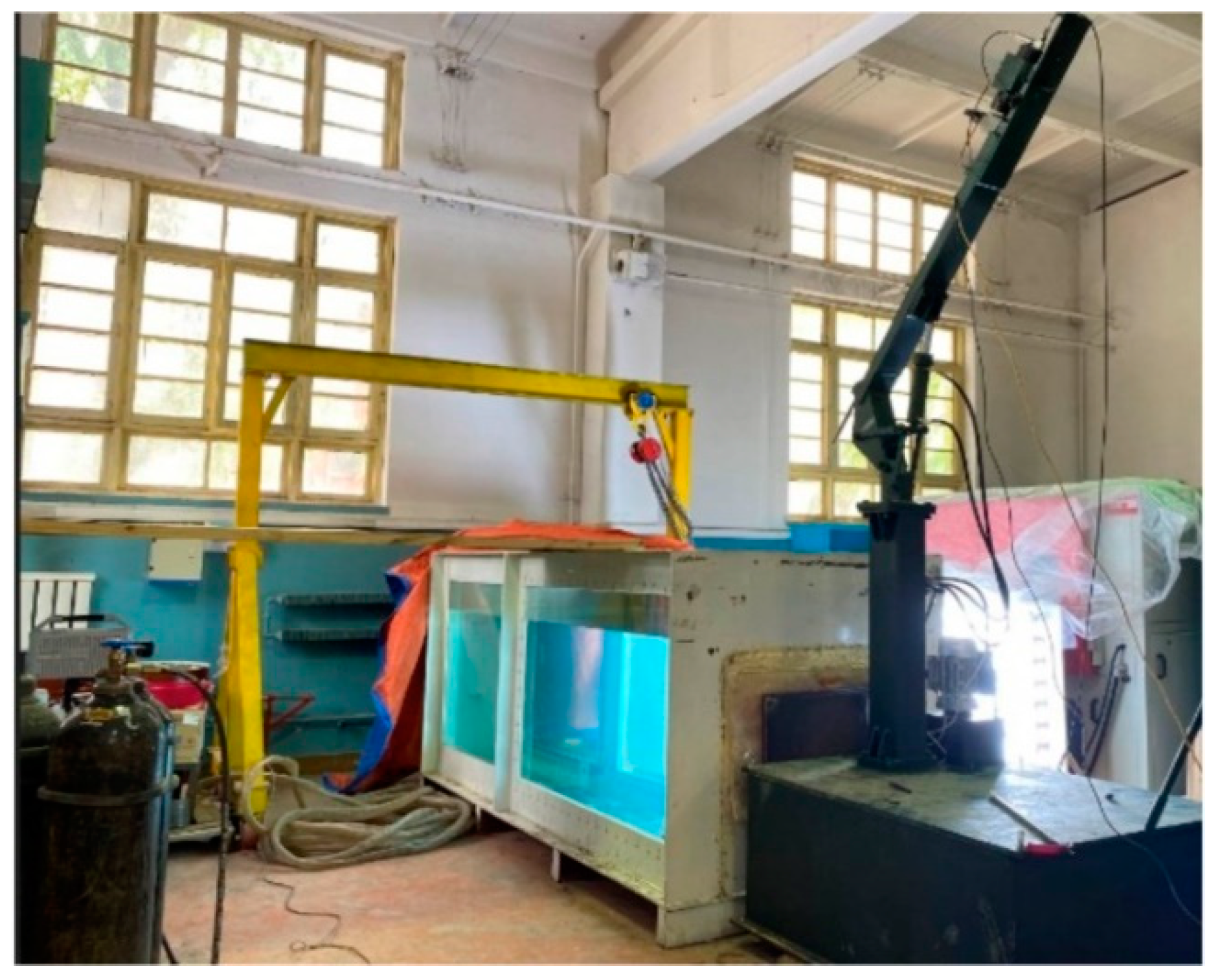
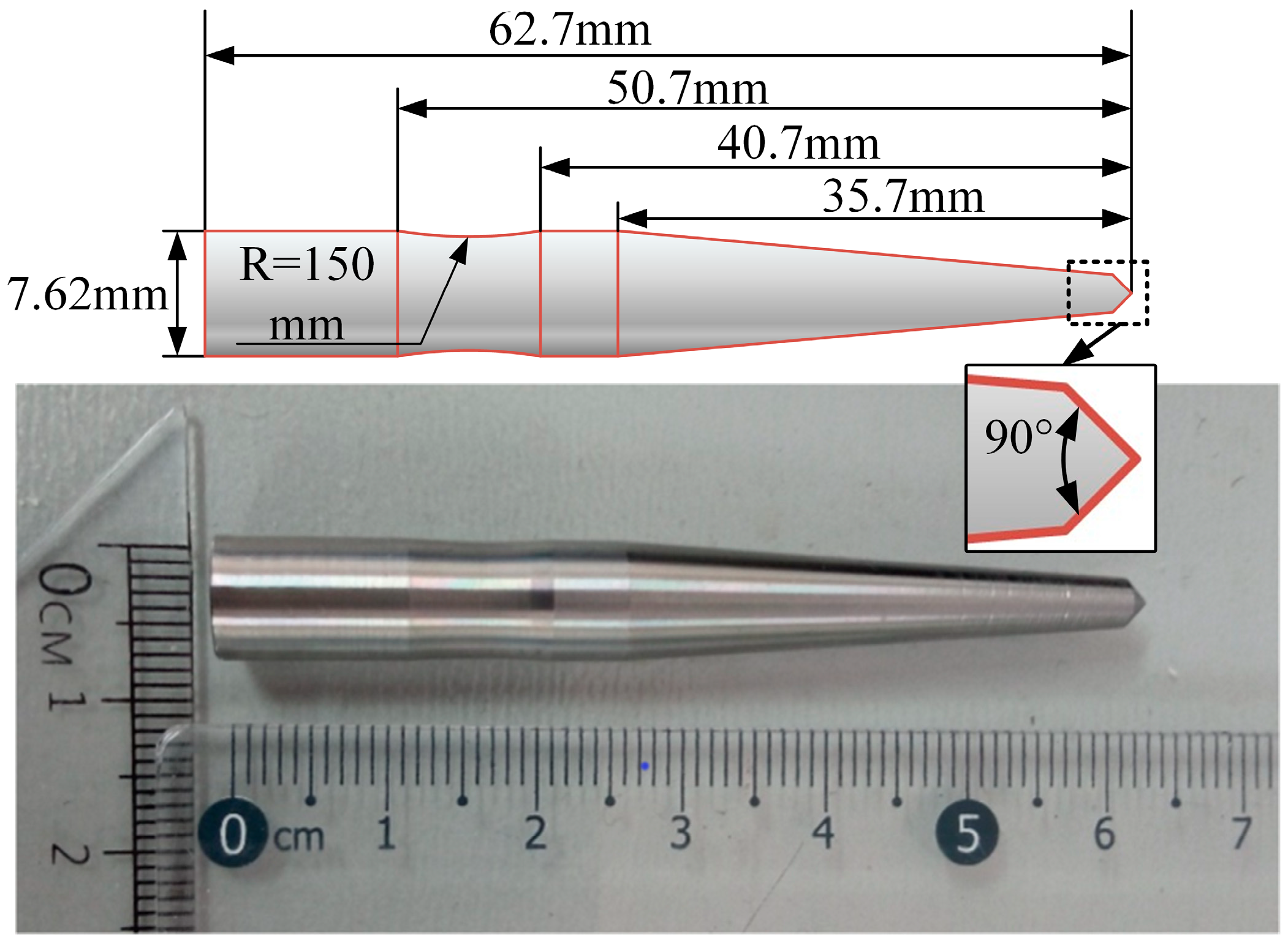
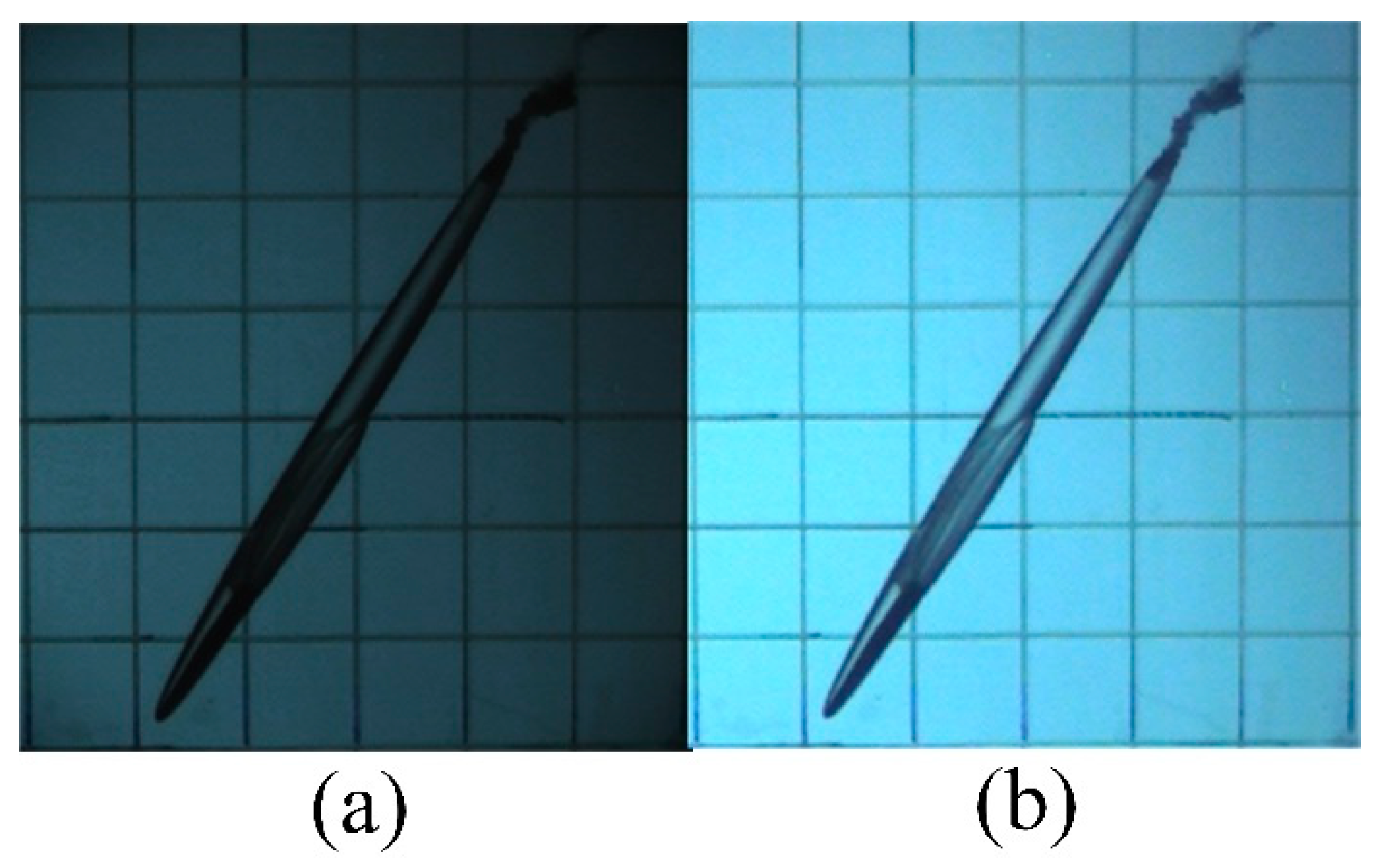

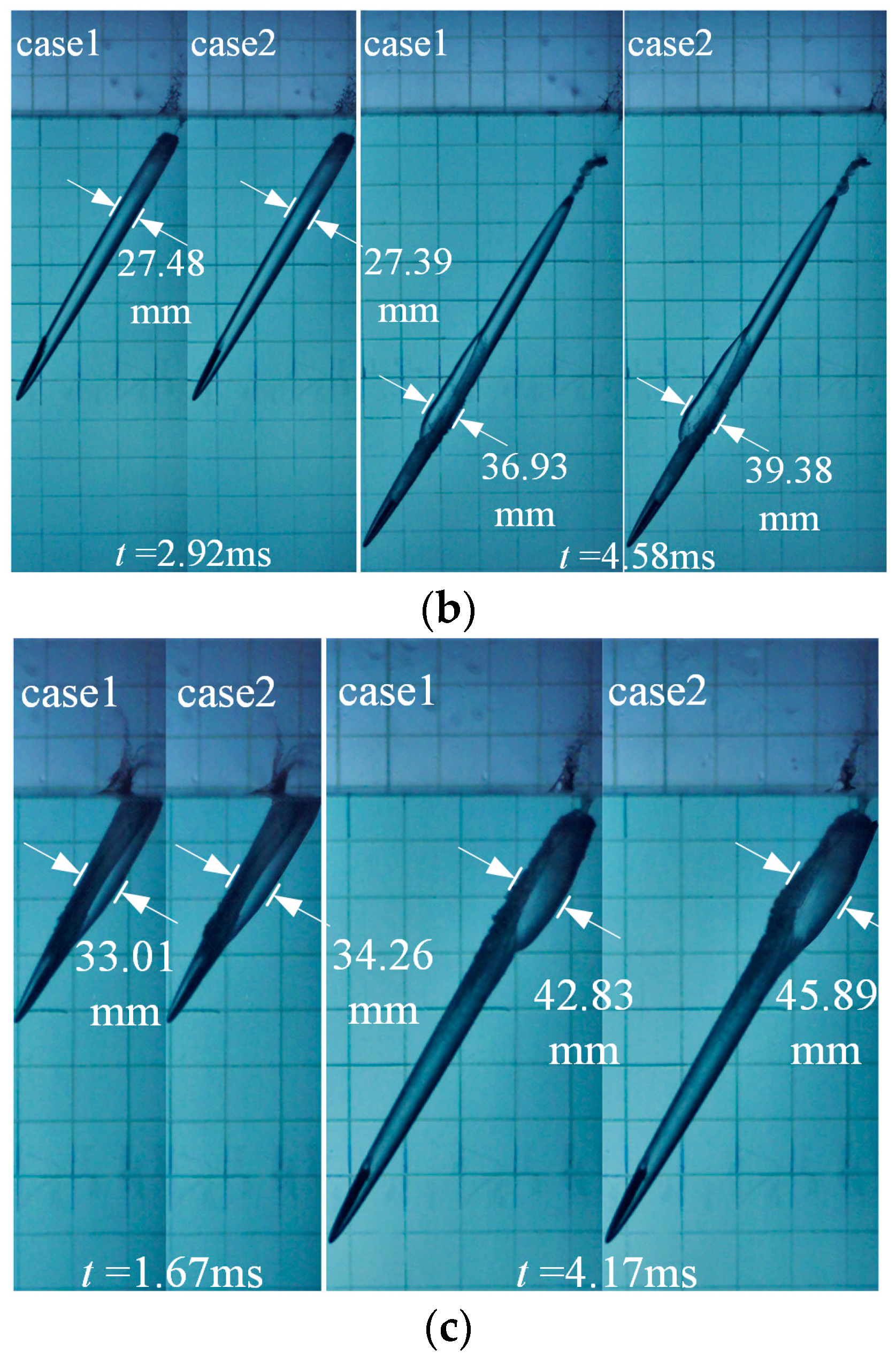

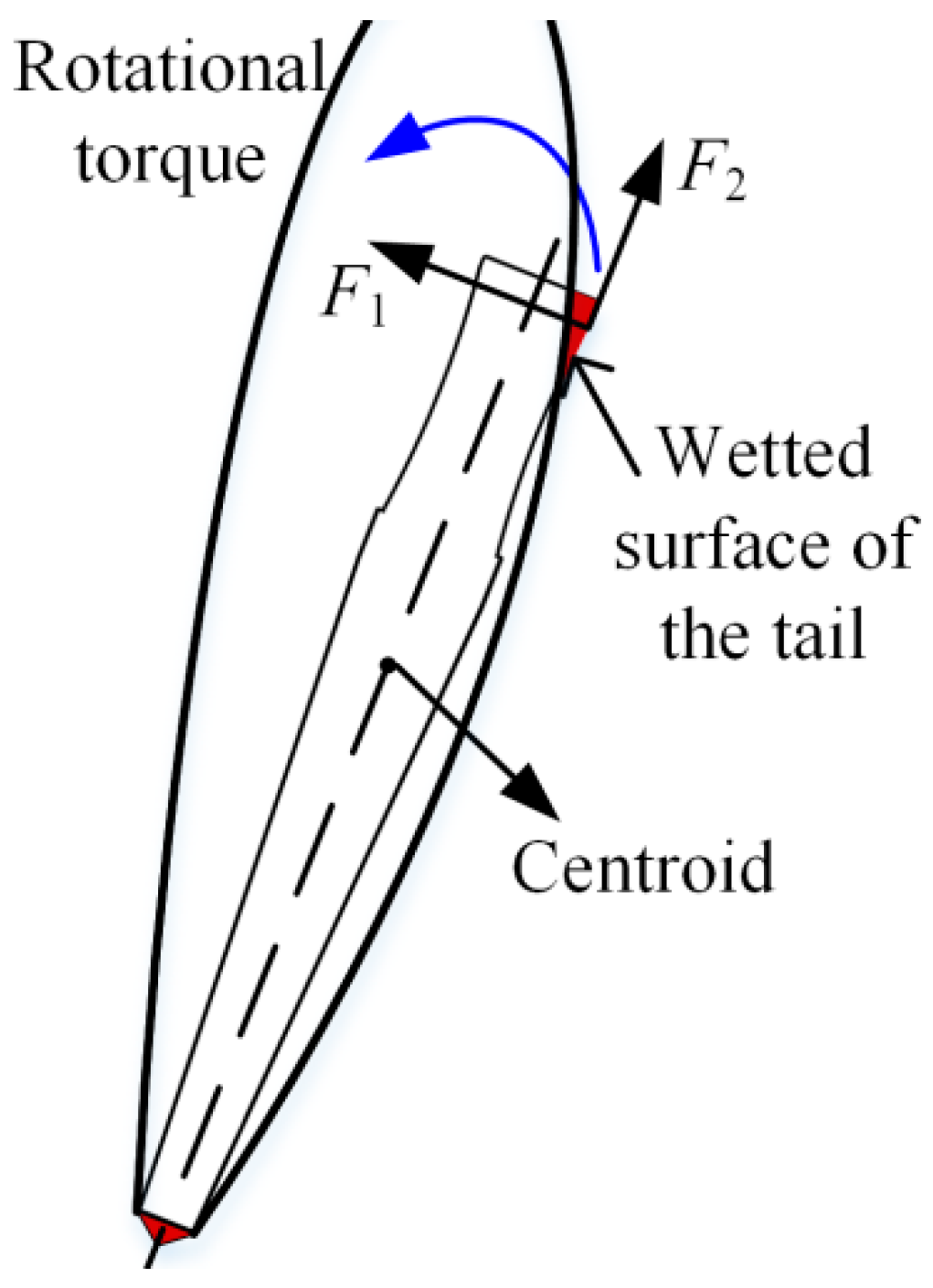
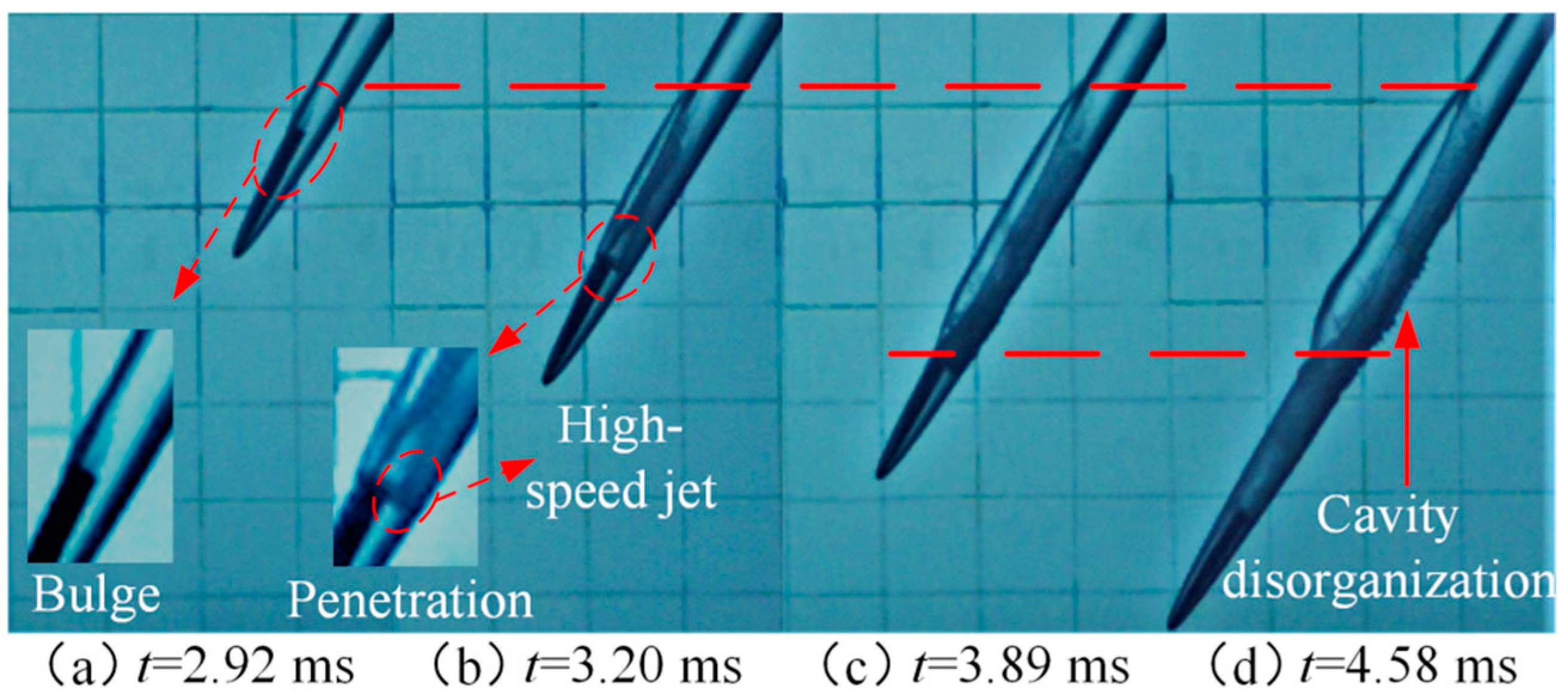
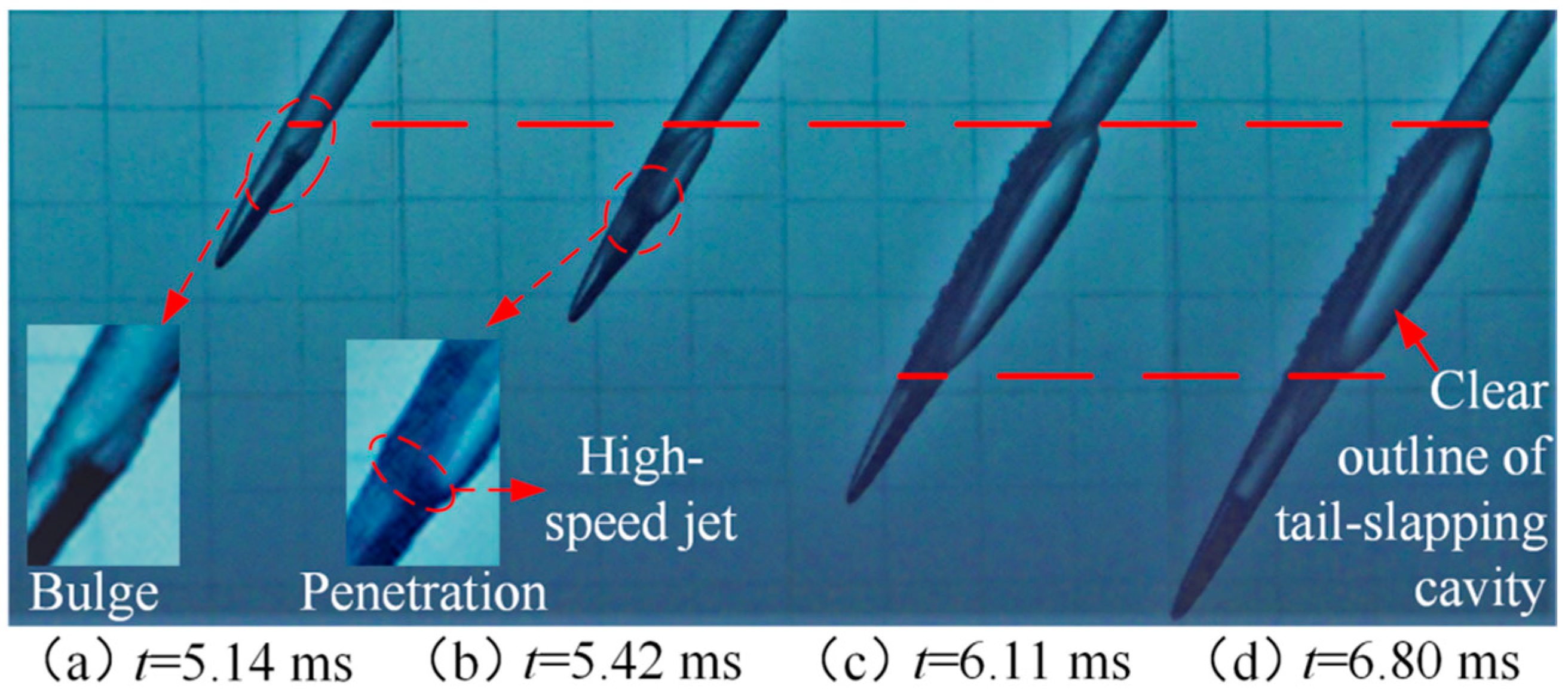
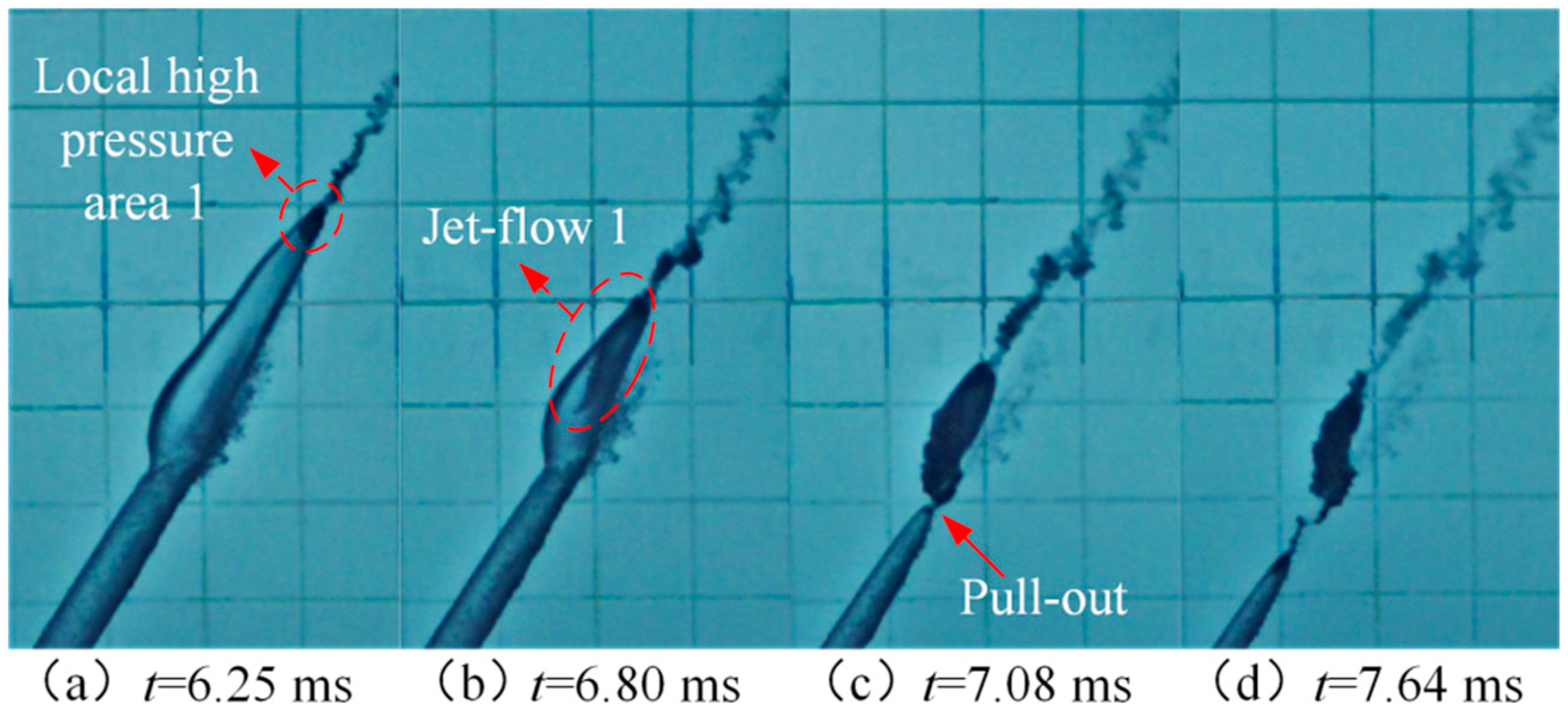

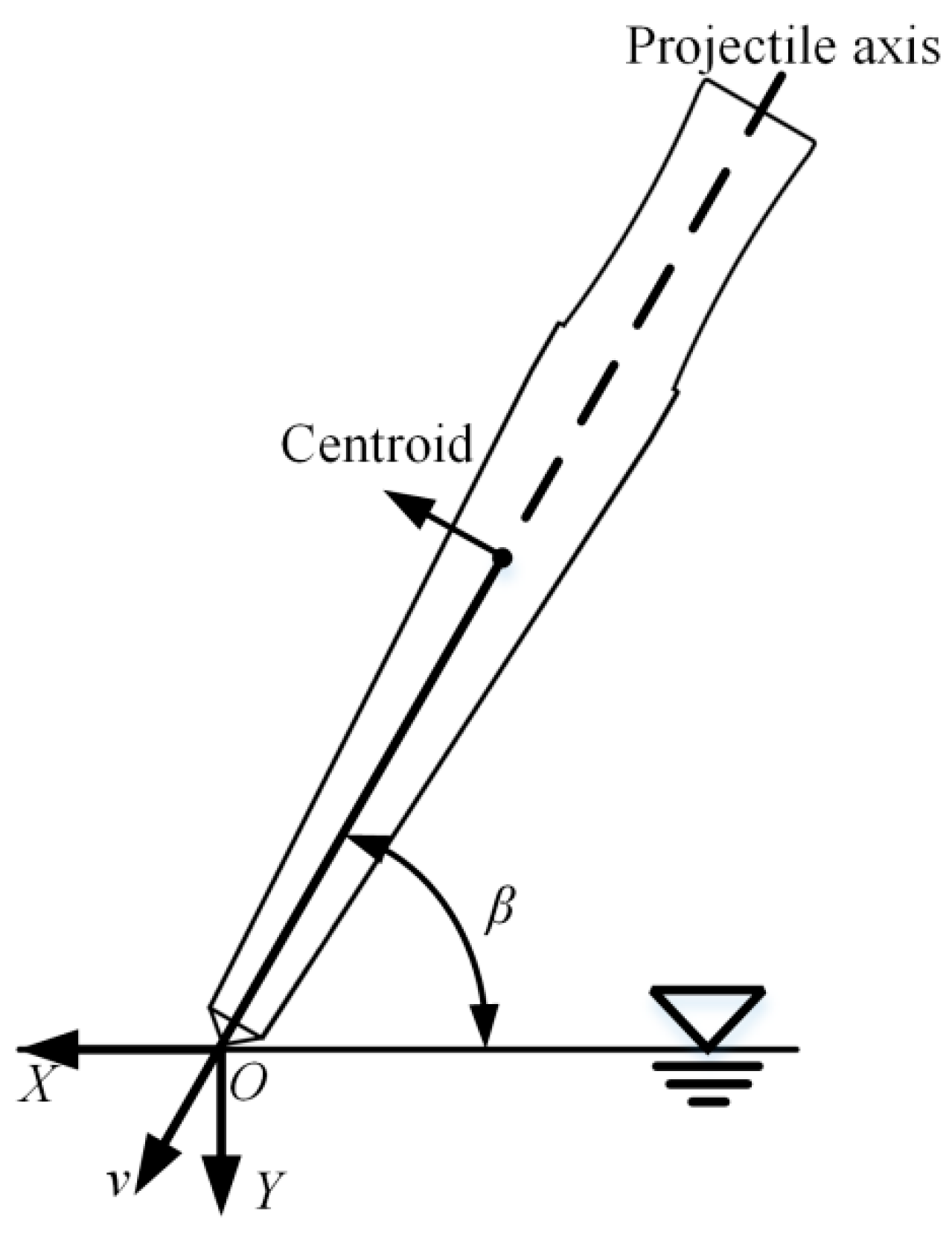
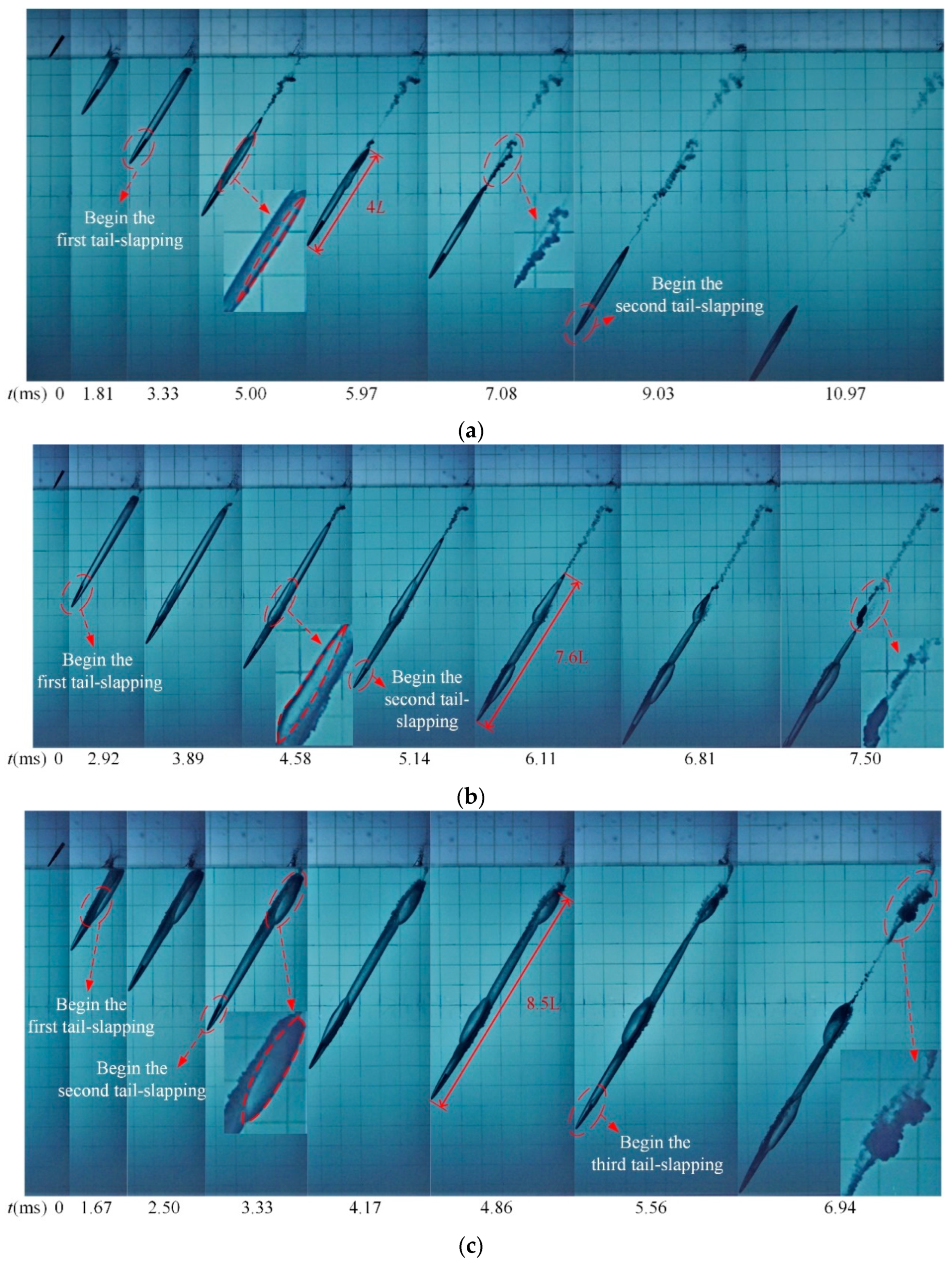

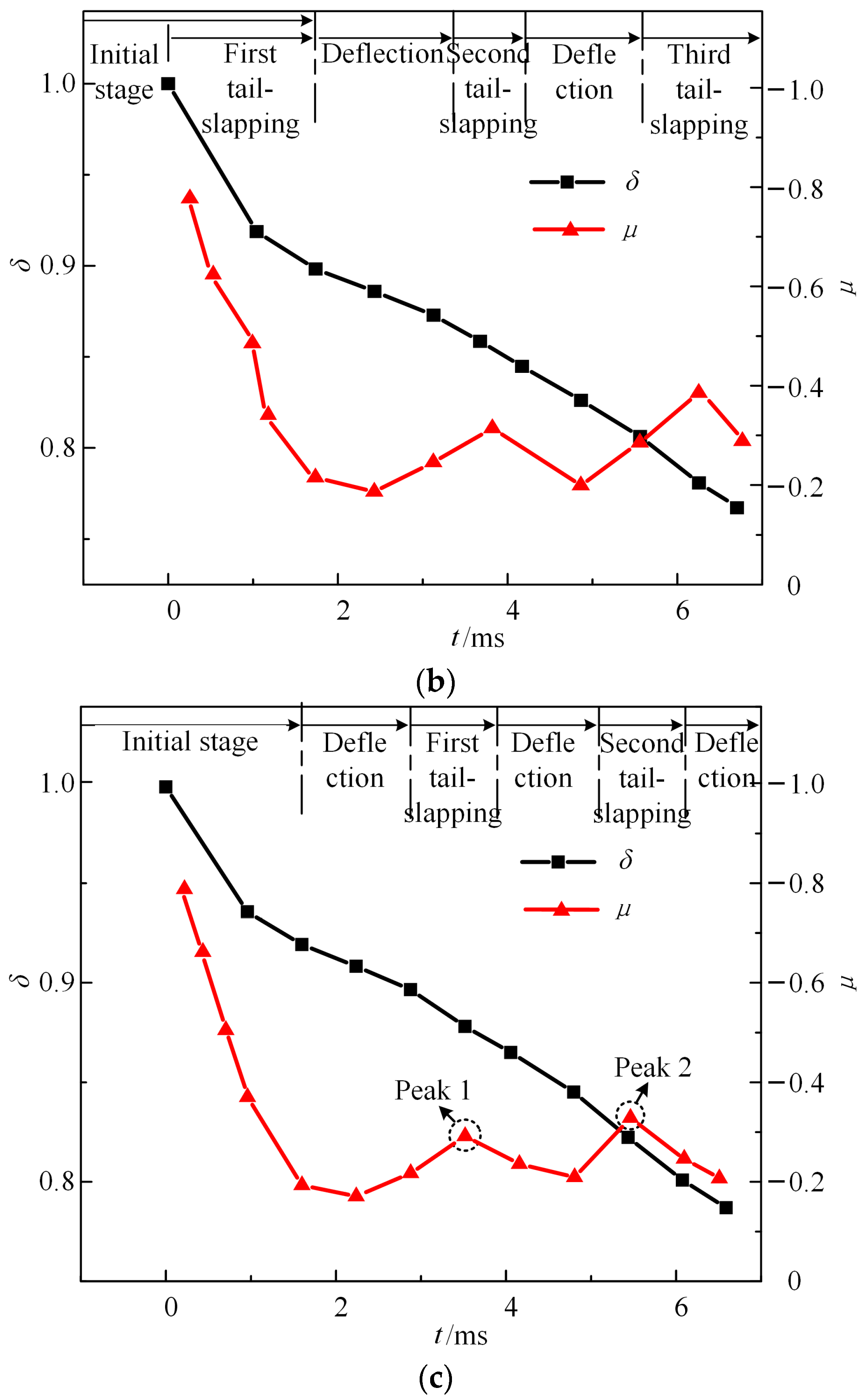
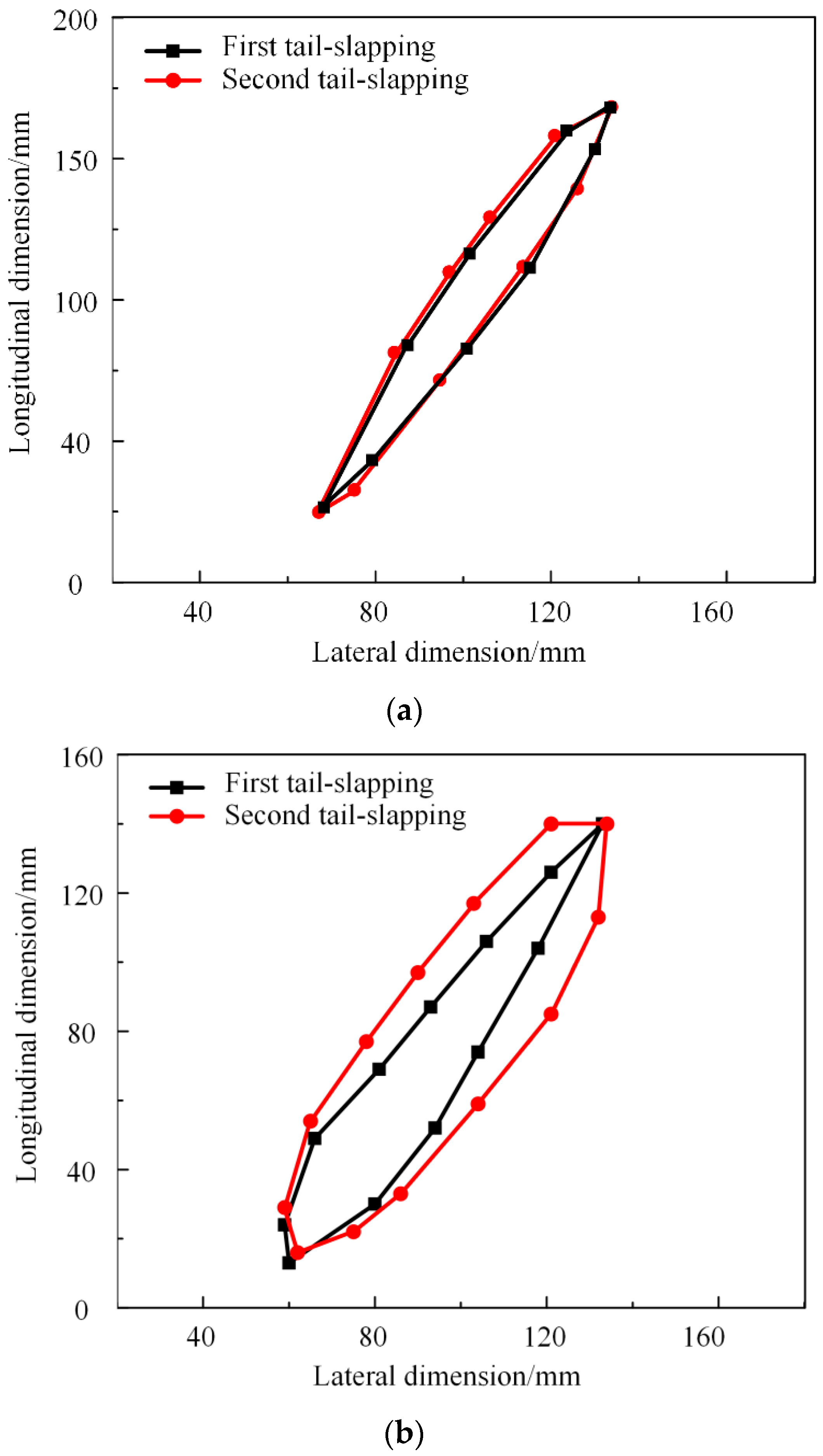
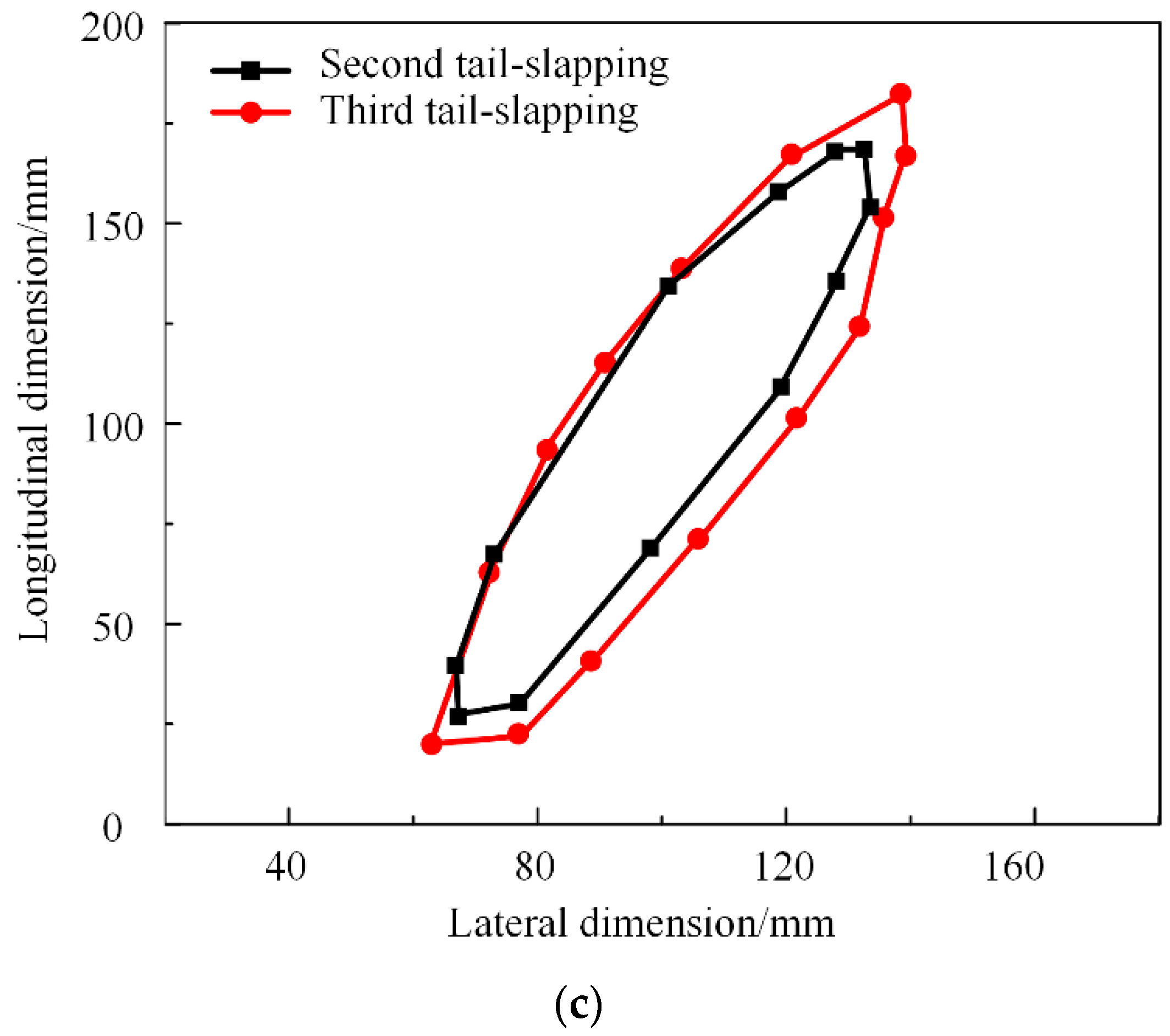
| Diameter (mm) | Length (mm) | Cone Angle (°) | Mass (g) |
|---|---|---|---|
| 7.62 | 62.7 | 90 | 12.6 |
Disclaimer/Publisher’s Note: The statements, opinions and data contained in all publications are solely those of the individual author(s) and contributor(s) and not of MDPI and/or the editor(s). MDPI and/or the editor(s) disclaim responsibility for any injury to people or property resulting from any ideas, methods, instructions or products referred to in the content. |
© 2023 by the authors. Licensee MDPI, Basel, Switzerland. This article is an open access article distributed under the terms and conditions of the Creative Commons Attribution (CC BY) license (https://creativecommons.org/licenses/by/4.0/).
Share and Cite
Lu, L.; Gao, C.; Li, F.; Zhang, D.; Yan, X.; Li, Q.; Hu, Y. Experimental Investigation into the Tail-Slapping Motion of a Projectile with an Oblique Water-Entry Speed. J. Mar. Sci. Eng. 2023, 11, 1664. https://doi.org/10.3390/jmse11091664
Lu L, Gao C, Li F, Zhang D, Yan X, Li Q, Hu Y. Experimental Investigation into the Tail-Slapping Motion of a Projectile with an Oblique Water-Entry Speed. Journal of Marine Science and Engineering. 2023; 11(9):1664. https://doi.org/10.3390/jmse11091664
Chicago/Turabian StyleLu, Lin, Cisong Gao, Fei Li, Dongxiao Zhang, Xuepu Yan, Qiang Li, and Yanxiao Hu. 2023. "Experimental Investigation into the Tail-Slapping Motion of a Projectile with an Oblique Water-Entry Speed" Journal of Marine Science and Engineering 11, no. 9: 1664. https://doi.org/10.3390/jmse11091664
APA StyleLu, L., Gao, C., Li, F., Zhang, D., Yan, X., Li, Q., & Hu, Y. (2023). Experimental Investigation into the Tail-Slapping Motion of a Projectile with an Oblique Water-Entry Speed. Journal of Marine Science and Engineering, 11(9), 1664. https://doi.org/10.3390/jmse11091664






